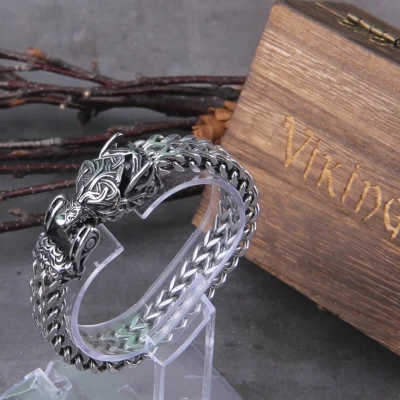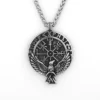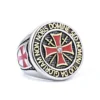In the vast tapestry of global mythologies, dragons have always held a special allure. From the fire-breathing behemoths of European tales to the serpentine deities of Eastern legends, these creatures have been both revered and feared. Yet, amidst this worldwide fascination, the Welsh Dragon, a central figure in Welsh dragon mythology, stands distinct. This fiery emblem is not merely a creature of folklore in Wales; it is a symbol of the nation’s spirit, resilience, and pride. Its presence in Welsh dragon mythology is not just as a mythical beast but as an embodiment of the very essence of Wales.
The dragon, or “draig” in Welsh, is not just a creature of folklore in Wales; it is a symbol of the nation’s spirit, resilience, and pride. Its fiery red silhouette graces the national flag, and its tales are woven into the very fabric of Welsh culture. But what is it about this particular dragon that has so captivated the Welsh people? To understand that, we must journey back through the annals of history, exploring ancient legends, medieval battles, and the enduring legacy of the Welsh Dragon in shaping the identity of a nation.
Historical Origins of the Welsh Dragon- Celtic Roots and Early Legends
The story of the Welsh Dragon, like many ancient tales, finds its roots in Celtic myths and legends. The Celts, with their rich tapestry of folklore, often spoke of powerful creatures that roamed the land, skies, and seas. Among these, the dragon was a creature of particular significance, representing power, wisdom, and sovereignty.

From Tribal Symbols to National Icon
As ancient Welsh tribes established their territories and identities, the dragon emerged as a symbol of strength and unity. It wasn’t merely a creature of tales but began to represent the spirit of the Welsh people. Over time, as these tribes united against common foes, the dragon became a more pronounced emblem, symbolising the collective might and identity of Wales.
Dinas Emrys and the Prophecy
One of the most iconic tales in Welsh dragon mythology is that of Dinas Emrys. According to legend, a white dragon and a red dragon were found battling beneath this hill. The red dragon, representing the Welsh, eventually triumphed over the white dragon, symbolising the invading Saxons. This tale not only reinforced the dragon’s significance in Welsh culture but also prophesied the enduring strength and resilience of the Welsh nation.
The Dragon’s Evolution Over Time
As centuries passed, the depiction and significance of the dragon in Welsh culture evolved. From being a tribal symbol, it transitioned into a representation of the entire nation. Its tales were passed down through generations, each era adding its own interpretations and layers to the rich mythology of the Welsh Dragon.
In this journey through time, the Welsh Dragon has been more than just a mythical creature; it has been a reflection of the hopes, struggles, and aspirations of the Welsh people. Through battles, conquests, and cultural revolutions, the dragon has remained a steadfast symbol of Welsh identity, echoing the nation’s rich history and indomitable spirit.
The Red Dragon vs. The White Dragon- A Tale of Two Dragons
The ancient legend of the red and white dragon has become an integral part of Welsh cultural identity. According to myth, during the 5th century these two dragons battled fiercely in a symbolic clash between the Britons and Saxon invaders. The triumph of the native red dragon over the foreign white dragon represented Wales overcoming occupation to remain free.
Although born from mythology, the red and white dragons became real symbols in Wales. The red dragon came to embody the Welsh people, manifesting their resilience, pride and spirit of independence. In contrast, the white dragon represented outside threats from forces seeking to conquer Wales and suppress its sovereignty.
Today the red dragon remains a patriotic icon of this small Celtic nation, symbolizing the enduring struggle of its people to maintain their heritage. This mythic tale of two dragons locked in epic combat continues to capture the spirit of Wales.

Symbolism and Interpretations
The tale of the two dragons is rich in symbolism. The red dragon’s victory over its white counterpart is often seen as a metaphor for the resilience and survival of Welsh culture and identity amidst external threats. The story also underscores the importance of prophecy in Welsh folklore, with Merlin’s predictions serving as a beacon of hope during tumultuous times.
You Might Like These
-
Born of Fire Made of Legend T-Shirt – Welsh Dragon Design
Price range: $26.00 through $49.00 -
Cymru Welsh Dragon Minimalist T-Shirt – Gildan 5000
Price range: $26.00 through $45.00 -
The Red Dragon Rises T-Shirt – Welsh Dragon Shirt
Price range: $27.00 through $38.00 -
Believe in Dragons T-Shirt
Price range: $26.00 through $49.00
Legacy of the Duel
The legacy of this epic duel between the red and white dragons is still felt today. It has shaped national sentiments, inspired literature, and even influenced political movements. The red dragon’s triumph serves as a reminder of the indomitable spirit of Wales, a nation that, despite challenges, has always found a way to persevere and thrive.
The Welsh Dragon in Medieval Times- A Symbol of Resistance
During the medieval era, as Wales faced numerous invasions and territorial disputes, the dragon emerged as a beacon of hope and resistance. It wasn’t just a creature of myth; it became a rallying symbol for Welsh leaders and warriors defending their homeland.
Battle Standards and War Banners
Many Welsh leaders, most notably Owain Glynd?r, the last native Welshman to hold the title of Prince of Wales, adopted the dragon as their emblem. The sight of the red dragon on war banners struck fear into the hearts of enemies and inspired Welsh troops. It served as a potent reminder of their heritage, unity, and the prophecy of their eventual triumph.
The Dragon and Welsh Castles
Medieval Welsh castles, often sites of strategic importance, also bore the mark of the dragon. Whether carved into stone, painted on walls, or flying high on flags, the dragon’s presence in these fortresses symbolised the enduring Welsh spirit, even in the face of adversity.
Literary References and Chronicles
Medieval Welsh literature and chronicles frequently referenced the dragon. Poets, bards, and chroniclers used it as a metaphor for Wales itself – a fierce, proud, and resilient nation. The dragon’s tales were not just stories of old but were continually evolving narratives that reflected the challenges and aspirations of the medieval Welsh populace.
The Dragon’s Role in Diplomacy
Interestingly, the dragon also played a role in diplomatic relations. It was often used in seals, treaties, and official documents, underscoring its importance not just in warfare but also in the political and diplomatic arenas of medieval Wales.
In the tapestry of medieval Welsh history, the dragon was more than just an emblem; it was the heart and soul of a nation. Through wars, treaties, literature, and art, the dragon’s legacy was continually forged, ensuring its place as an eternal symbol of Welsh identity and pride.










